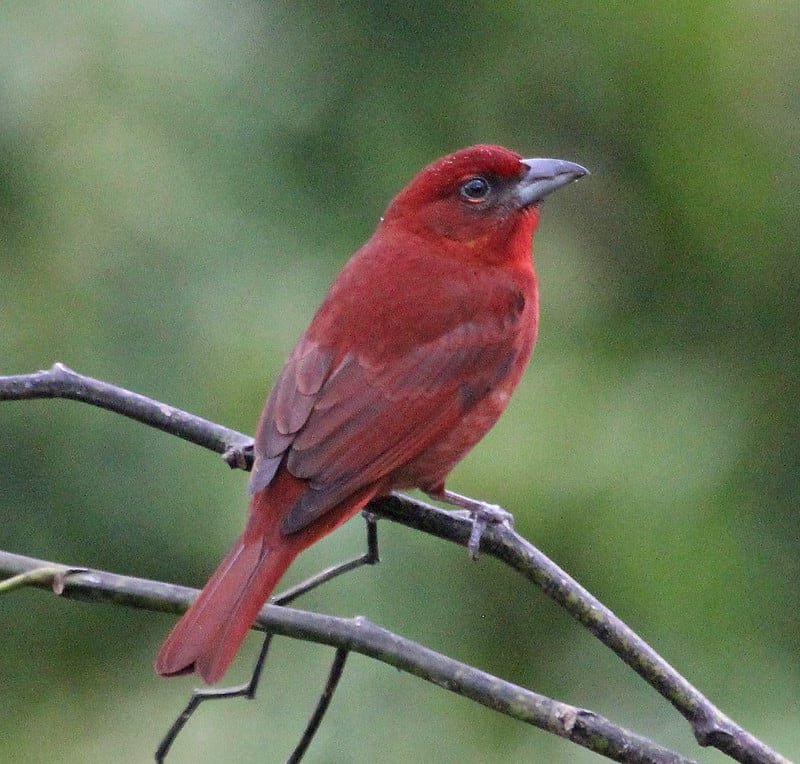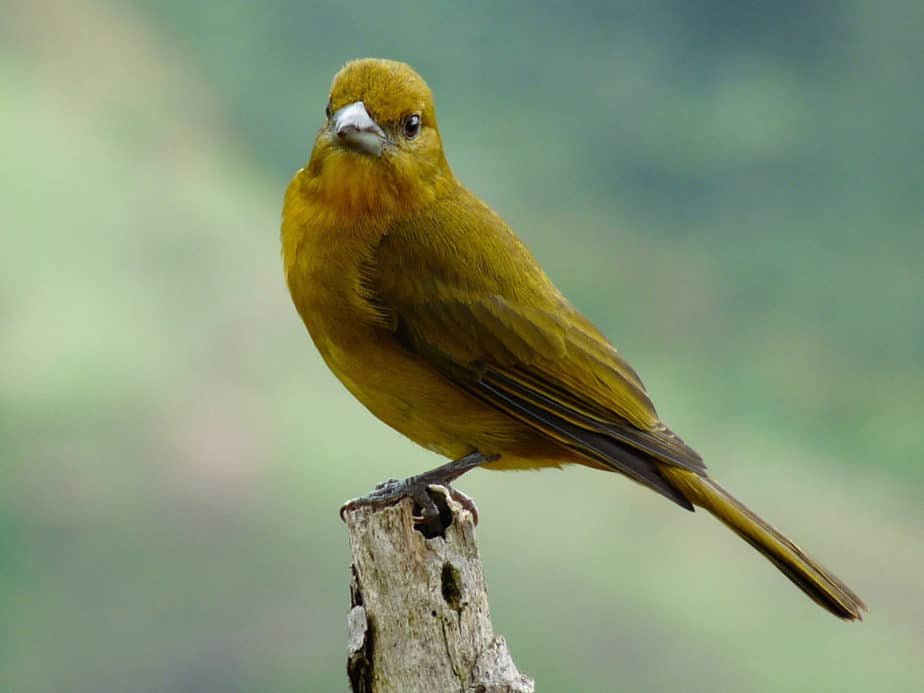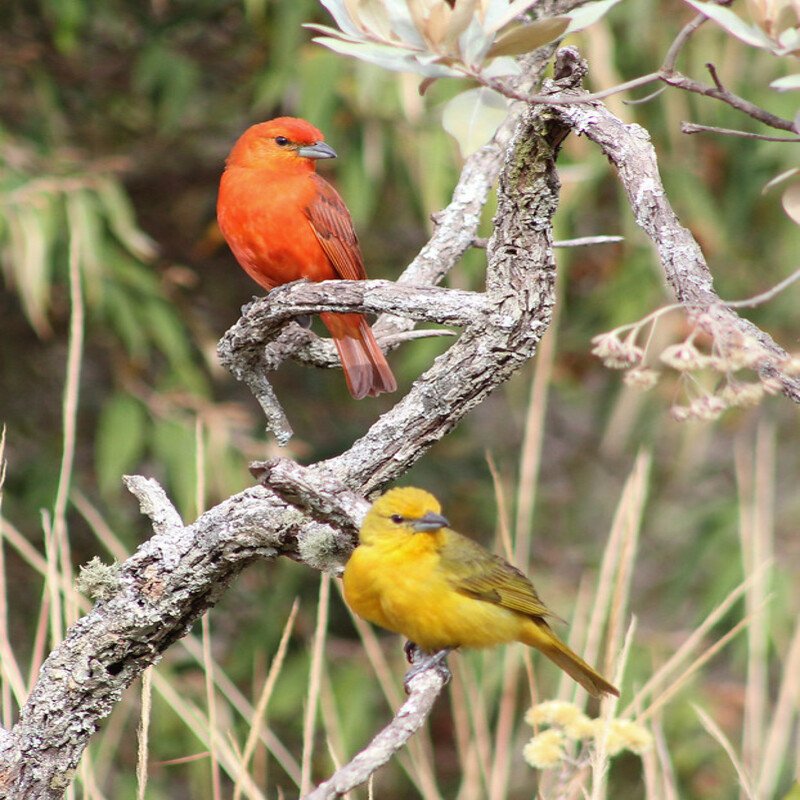The Hepatic tanager, Piranga flava is a medium-sized songbird found in North America. Previously classified as a member of the tanager family (Thraupidae), it and the other members of its genus are now classified as members of the cardinal family (Cardinalidae). Similar to other members of the cardinal family, the species’ plumage and vocalizations are similar to those of the cardinal.
Quick Overview: Piranga flava – Hepatic tanager
Body size: about 8 in (20 cm) and roughly weight in 37g (1.3g).
Main colors: Red, Yellow
Range: United States in California and Texas; introduced in South America and Mexico
Migratory Bird: Yes
Best time of the year to see in the U.S.: June, July, August, September
Conservation Status: Least Concern
Hepatic tanager Description
The tanager is a large, stocky bird. Generally speaking, males are bright red with a dusty wash on their upper parts and sides (especially in northern populations); females are a muted yellowish color. The throat and crown of both sexes have the brightest color. Take note of the stout bill and the dark lores as well. Several distinct populations can be found from the southwestern United States to South America, and they are most likely made up of several different species.

Size
These birds have a length of 8 in (20 cm) and a weight of 37g (1.3g). Their wings could range 12.75 in (32cm).
Feeding
It primarily feeds on insects in the upper foliage of tall trees, where it scavenges prey from the branches, stems, and leaves of the trees. Occasionally, insects are caught in mid-flight. In addition, he consumes fruits.
Habitat
Throughout South America, forest birds can be found in a variety of forested habitats, ranging from open woodlands in the lowlands to scrubby areas in the high Andes. For northern birds, mountainous areas with a mix of pine and oak forest are their preferred habitat.

Behavior
They have habits that are similar to those of the western tanager, which is a member of the same family. Using different strategies, it searches for food in the foliage of trees, moving slowly and methodically; different individuals employ different strategies. During the summer, the northern form primarily consumes insects, spiders, and a small amount of fruit. It has been observed to consume nectar in Mexico, according to reports. It travels south from Oaxaca, following swarms of army ants.
Piranga flava Scientific Classification
- Kingdom: Animalia
- Phylum: Arthropoda
- Subphylum: Chelicerata
- Class: Aves
- Order: Passeriformes
- Family: Cardinalidae
- Genus: Piranga
- Species: Piranga flava
Subspecies
There are three subspecies groups for these bird species, namely the hepatica group which is the only subspecies that could be found in the United States and introduced to Mexico and Honduras. The two other subspecies were lutea group and flava group that could be found in South America and Southern/ Eastern Brazil.
Best time of the year to see
These birds’ best time to see in the year is during summertime, from June to September.
Distribution of the Piranga flava in the USA
This species breeds in the southwestern United States, from California east to Texas and south into Mexico; it can also be found in Central and South America, from Costa Rica south to Argentina. This species spends its winters south of the border between the United States and Mexico. These birds may spend the winter in southern California on occasion.


